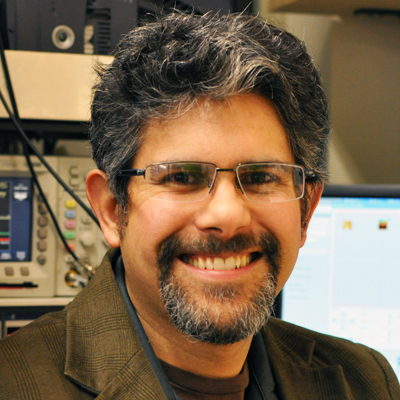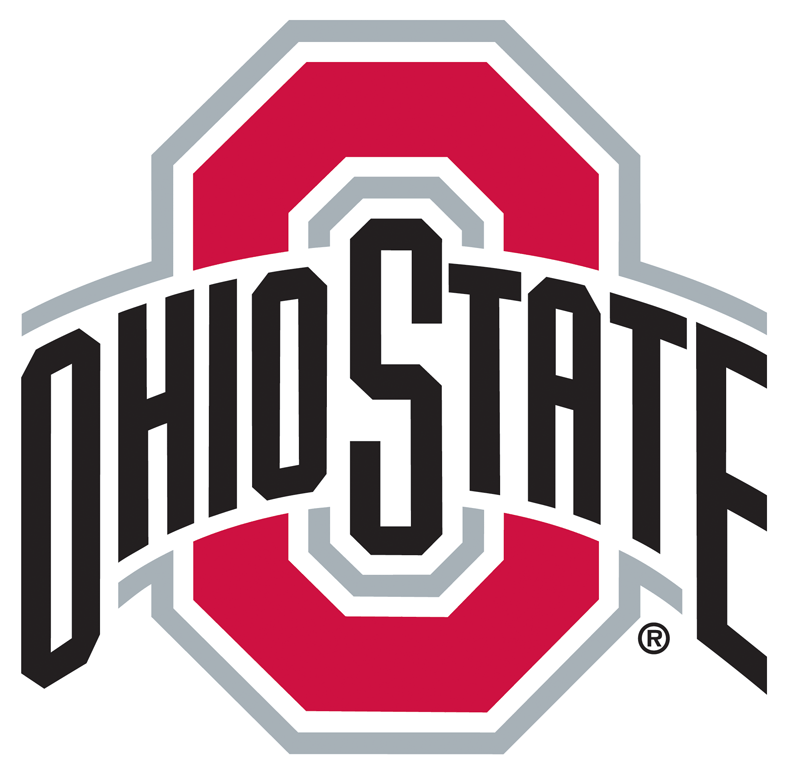Connecting small physics to big problems
The nanometer scale is special because it is the length scale at which the ‘palette’ of the periodic table can be used to make ‘paintings’ of materials and chemical compounds that are limited only by our imagination, patience, and funding. Dr. Jay Gupta, Professor of Physics at Ohio State University, connects fundamental science of the small to society’s biggest problems. For example, he and his group pull, push and prod individual molecules on catalyst surfaces to determine the mechanisms for greenhouse gas recycling into gasoline, powered by sunlight. In like fashion, the team positions individual atoms in semiconducting materials to explore concepts and problems for next-generation information technologies. The most unique aspects of Dr. Gupta’s research are the novel techniques and measurements he and his team develop for studying nanoscience problems. Advanced tunneling microscopes are custom-built to study individual atoms and molecules under the most pristine conditions possible today. In this way, Dr. Gupta’s team is able to transform some of the most basic science into rigorous studies that can be extended to the complexity of real-world applications.
Recognizing that grand challenges in sustainability and information technologies will require generations of effort, Dr. Gupta’s lab engages scientists at all stages of their careers. High school students newly inspired by their AP courses work side by side with postdoctoral researchers ready to transition to their own faculty positions. His policy of engagement isn’t confined to the lab however, and he and his team connect their research to the local community through regular lectures at the local science center, participation in physics-themed summer camps, and lab tours for elementary school classes. As part of these efforts, they have developed methods for remote control of their tunneling microscopes so that anyone, anywhere can take atomic resolution images.

Current research includes:
-
Energy: Dr. Gupta and his team are studying CO2 surface chemistry on model catalysts by using their microscopes to monitor the motion, dissociation and interactions of individual molecules. Amazingly, there are already catalysts that can convert CO2 into gas-tank-ready methanol with energy input from sunlight. These catalysts may not only mitigate a principal greenhouse gas, but may also be an effective way to store intermittent solar electricity. However, a more fundamental understanding is needed to effectively harness this on the large scale required to meet the global energy challenge.
-
Computing: Computers have become faster over the years by being able to shrink to the size of transistors, which are based on semiconductors such as silicon. These have shrunk to the point, however, where the random distribution of the impurities is becoming important. By characterizing and controlling the individual impurity atoms in semiconductors, Dr. Gupta and his team are identifying how impurity atoms exhibit new properties when the nanoscale environment is controlled. In so doing, Dr. Gupta is developing the basic science necessary for faster and more effective computing.
-
Quantum Matter: Dr. Gupta and his team are exploring the properties of quantum matter, a new class of nanoscale materials. For example, they are studying one atom thick sheets of carbon, silicon, and germanium which have extraordinary physical, electronic, and optical properties. Because these materials are entirely surface and thus may be extremely sensitive to contamination, Dr. Gupta is leading an effort to prepare pristine surfaces in ultrahigh vacuum, and at liquid helium temperatures (- 270 C) so that the atoms hold still.
-
Making Research Relatable: Dr. Gupta and his group are committed to connecting research with the world at-large. They actively reach out to grade school and high school students and even invite high school students to work with the lab. Additionally, Dr. Gupta gives lectures at local science centers that are produced as webcasts and broadcasted nationwide for youth interested in the sciences.
Bio
Dr. Jay Gupta has always been curious about the world around him. Though not a natural, his love and tenacity for puzzle solving as a child has developed into a sincere passion for science. His interest in chemistry stems from experiments in his garage that were supported by his father, a Ph.D. chemist himself and a kind role model. His captivation with noxious odors, fire and color however was balanced against other interests in soccer, baseball, early computers, and videogames.
It wasn’t until an AP Physics course in high school that Dr. Gupta really became seriously interested in science, particularly in physics. His teacher, Dr. David Lay, did an amazing job coming up with activities outside the normal curriculum. For example, Dr. Gupta fondly remembers going outside to measure telephone pole heights with triangulation and learning digital logic by building circuits with transistor elements. These rich experiences developed into Dr. Gupta’s intention to study either chemistry or physics in college. Finding both subjects fascinating, Dr. Gupta ended up double majoring. One rewarding aspect of this interdisciplinary training was that he got to approach subjects such as quantum mechanics, from different points of view.
It wasn’t until he started his graduate studies however, that he found his calling in experimental physics. Dr. Gupta feels fortunate to have been recruited by his advisor, Dr. David Awschalom to work in the lab during the summer before his classes started. The joys of cable trays, quantum dot spectroscopy and plumbing soon eclipsed his initial interests in general relativity and astrophysics. Dr. Gupta hasn’t looked back since.
Outside the lab, Dr. Gupta values being a father to two young daughters, enjoys reading and rides a variety of bicycles. But perhaps the most unusual way that he spends his time is whistling. A self-described “avid whistler,” Dr. Gupta can often be found incessantly practicing this craft at all hours of the day. When asked about how his talents are received in the lab, Dr. Gupta laughs saying, “I have patient labmates.”


